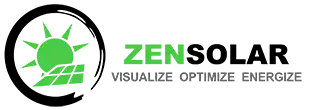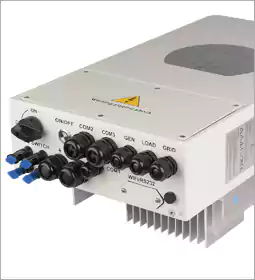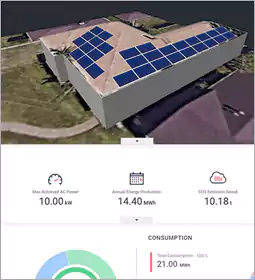Solar Batteries, What is the Difference?
Solar batteries come in different 'technologies', and these affect cost, lifespan, and effectiveness. Find out what these types are and which is best for you
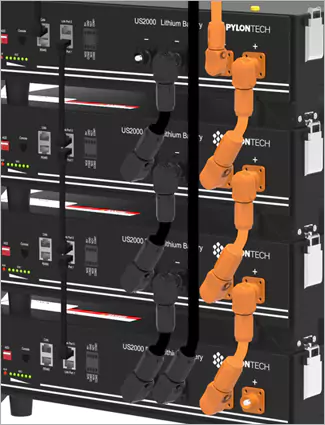
The difference in batteries is significant and should be considered when making your decision to own a solar power system - for your home or office.
The four battery types currently available are:
Sealed Lead Acid
An upgrade to the flooded version, Sealed Lead Acid eliminates the maintenance required compared to its counter partner.
It’s not without its drawbacks, however, a very short lifespan compared to that of the Lithium-ion Battery and they end up being more expensive in the long run due to the fact that they will need to be replaced in about 3 years time.
Gelled or AGM lead acid batteries (which are typically sealed or valve regulated) have several potential advantages:
However, these batteries typically require a more precise and lower voltage charging regime. The lower voltage charging regime is due to the use of lead-calcium electrodes to minimise gassing, but a more precise charging regime is required to minimise gassing from the battery. In addition, these batteries may be more sensitive to temperature variations, particularly if the charging regime does not compensate for temperature or is not designed for these types of batteries.
AGM (Absorbent Glass Mat) are capable of handling higher temperatures with a lower self-discharge when they are idle. The cells have a lower resistance compared to conventional cells, they don’t leak and they don’t need to be in an upright position.
New AGM batteries cannot be connected in series to existing, older batteries as this will damage the newest addition.
Gel Batteries
Gel batteries are a type of lead-acid battery that, in certain cases, can be a solid choice as an energy backup system or paired with solar panels. In this article, we’ll discuss some of the differentiating factors between gel batteries and other energy storage options, and the best use-cases for this technology.
The major difference between gel batteries and other lead-acid options (and where they get their name from) is the material inside: a gel battery includes silica in its inner electrolyte mixture, which creates a gel-like substance. We’ll spare you from the extensive details of everything that differentiates these two battery chemistries from one another, but it’s important to know that the gel batteries allow for more power to be packed into a lead-acid battery housing.
Gel batteries vs. standard lead-acid batteries
Gel batteries are a type of sealed lead-acid batteries, much like absorbed glass mat (AGM) batteries. Because they are “sealed”, gel batteries don’t need their water levels checked and monitored like standard lead-acid options, nor do they expel gas. These factors generally make gel batteries a safer option than traditional lead-acid options, as they’re more of a “set it and forget it” product.
Since gel batteries have a different interior consistency, you can install them in a variety of orientations and positions. Combining this with the lower/nonexistent fumes emitted during operation makes gel batteries applicable in situations where ventilation is limited.
Can you pair gel batteries with solar panels?
Like other lead-acid battery options, gel battery products can be a solid choice to pair with a solar panel system in select cases. However, for most residential solar panel installations, you’ll want to explore lithium-ion batteries like the Tesla Powerwall or LG Chem RESU to keep up with the high energy input from a solar panel system, as well as the high energy demands of a household.
Gel batteries, like AGM batteries, can be particularly useful for small, off-grid solar systems. For example, a remote cabin with low energy demand and a small system on the roof may be the perfect candidate for a gel or AGM battery bank. No maintenance is needed, and the relatively low upfront cost of lead-acid batteries in general makes gel batteries ideal for these smaller, off-grid setups. However, of all the types of lead-acid batteries, gel batteries are often the most expensive.
Lithium-ion
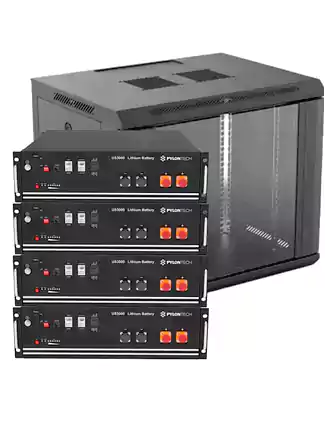
The most efficient battery on the market Lithium-ion battery technology is the future of solar storage. They waste significantly less power when charging and discharging. The cycle is deeper using more of their capacity with a long lifespan.
Completely maintenance-free they are lighter, smaller and they don’t produce as much heat as Lead Acid batteries and are perfect for setups that have space restrictions.
Easy, versatile Installation
Lithium-ion batteries come in a number of sizes and are easily installed. Should you need to add new batteries later, you’d simply need to add them to your existing battery pack.
Furthermore, you are able to choose how and where you’d like to install them. Lithium-ion batteries are available in wall-mounted, floor-mounted and rack-mounted options which give you the freedom of choice. For rack-mounted batteries, you also have the choice of a cabinet.
Why use a Super Capacitor?
Super Capacitors (Super Caps) are the next generation energy storage with advanced performance where it matters most. They have a lifespan of more than 30 years with no capacity degradation. A high charge and discharge rate with more than 99% round trip efficiency at a 100% depth of discharge make Super Caps the most efficient way to store energy.
How do Super Caps work?
Unlike batteries, Super Caps are manufactured by using a Graphene based composite to store energy electrostatically. Super Caps store more energy and have higher outputs than batteries. Combined with high performance and long-term stability, they are the ideal safe energy storage technology.
Improvements in Batteries
While batteries have been around for decades and the technologies are pretty much stable, there is always room for improvements. And such improvements are constantly being researched. Better capacity, reduced margin for eror, safer and so forth. As these are found and brought to market, we will let you know here.
